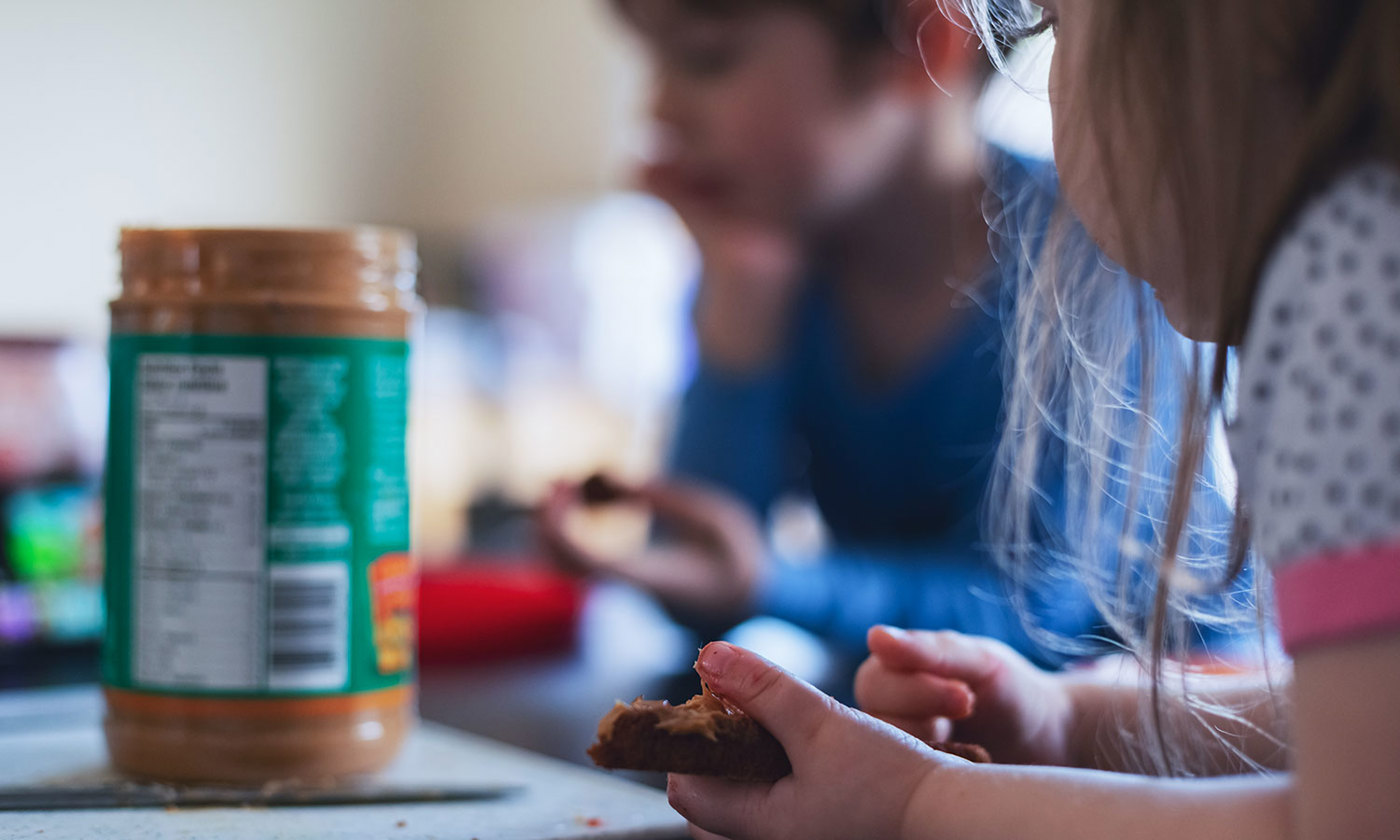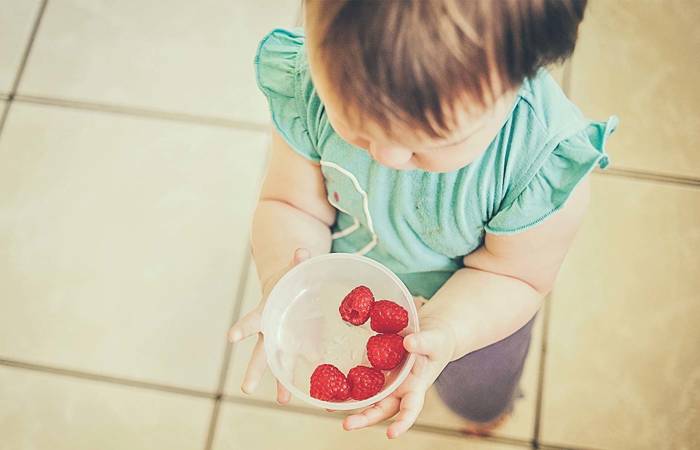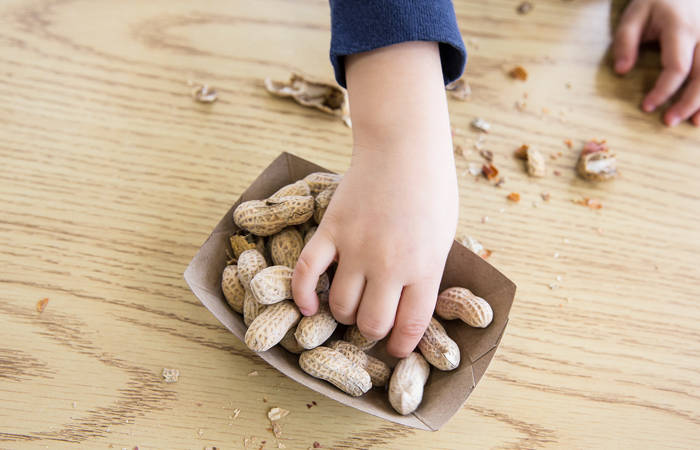Like what you see?
Sign up to receive more free parenting advice.
Thank you for subscribing to our newsletter!
Child Development

Stock photo ID:1185542355
A common fear parents have is not only worrying about their young children developing an allergy, but their children having a life-threatening anaphylactic reaction.
According to the Royal Children’s Hospital (RCH), an allergy develops when the immune system recognises and responds to something that is normally harmless.
An allergic reaction occurs when a child is exposed to an allergen and the body’s immune system reacts.
The reactions can vary in type and severity.
In 2014, the Australasian Society of Clinical Immunology and Allergy (ASCIA) found that allergic diseases are among the fastest growing chronic conditions in Australia. Around 30 per cent of the population has an allergic disease and this number is growing.
Food allergies have increased significantly in the last twenty years with ten per cent of infants in Melbourne recording a confirmed food allergy, which is one of the highest incidences internationally.
“For the past 15 years, researchers have been actively investigating the dramatic increase in allergies to help us understand the cause,” explains Dr Joanne Smart, Paediatric Allergist Immunologist, Director of Department Allergy and Immunology at RCH and Epworth Allergy Specialists.
“It is probably multi-factorial and studies are underway that may help us understand how and why allergies start.”
One thing we know is that infant eczema is often the earliest manifestation of allergies.
“The Healthnuts study of 5,300 12-month-old Melbourne infants found 20 per cent had eczema and ten per cent had food allergies. Those are big numbers,” explains Dr Smart.
Infants with eczema are more likely to develop allergies later on.
Dr Smart explains that the progression of allergies starts with eczema and flows on to food allergies.
This can be followed by asthma, and hay fever develops when children are a bit older.
“Pollen allergy and hay fever are quite uncommon in under two-year-old children, as they need exposure to those allergens over a period of time for their body to cause a response,” she explains.
Symptoms to a food allergy reaction
According to Dr Smart, there are clear symptoms parents can be mindful of when it comes to food allergy reactions.
The first is the reaction is reproducible (it happens repeatedly).
“Every time the child is exposed to the food, they have a reaction,” she says.
“However, if your child does have an allergic reaction to a specific food, I don’t recommend continuously trying that food to see if they keep having a reaction.
“Instead, seek medical advice.”
Second, allergic reactions happen fairly quickly.
“Usually, a reaction will happen 15 to 30 minutes after the food is consumed,” she adds.
The reaction can appear as a skin rash which can be raised, welty or itchy.
Then, there can be swelling of the face, lips and eyes.
There can also be gastrointestinal symptoms like cramping or vomiting.
On the severe end, the breathing system can be impacted which is displayed as a cough, wheeze, hoarse voice or difficulty breathing.
Finally, the cardiovascular system can also be compromised, and children can become pale, dizzy or collapse.
“Infants who have a severe reaction can just become pale and floppy, while older children can be pale and look like they are about to faint,” Dr Smart adds.
Often parents are anxious about feeding their infants the common allergenic foods, but there is now good evidence that early introduction of egg and peanut reduces their risk of developing allergies to these foods.Dr Joanne Smart
Stay up to date with the latest news and articles from First Five Years
Thank you for subscribing to our newsletter!
Strategies to prevent the likeliness of allergies
While we don’t know why allergies happen or why they are becoming more prevalent, we are learning how to reduce the risk of developing an allergy.
As eczema is one of the first signs of allergy, studies are looking at ways to prevent eczema by enhancing infant skin barrier for example with regular moisturizing and minimising use of soaps in the bath.
Another strategy is to introduce allergenic foods early.
“Often parents are anxious about feeding their infants the common allergenic foods, but there is now good evidence that early introduction of egg and peanut reduces their risk of developing allergies to these foods,” explains Dr Smart.
“Particularly for children with early onset eczema or children who have an egg allergy and are at an increased risk of a peanut allergy.”
A ground-breaking study referred to as LEAP (Learning Early about Peanut Allergy) found that children who were introduced to peanuts before the age of one and kept regularly eating peanuts until five years old had less peanut allergy compared to children who did not eat peanuts.
The National Allergy Strategy recommends introducing allergy causing foods, one at a time, to babies who are ready for solids at around six months old, but not before four months.
Eggs should be well-cooked, and peanuts should be offered as peanut butter or paste.
“Start off with small amounts,” adds Dr Smart.
“Don’t start with a peanut butter sandwich, start small so that if they do have an allergic reaction then it is more likely to be mild.”
The myths about allergies
“One of the biggest things I see is parents requesting allergy testing as a preventative measure,” says Dr Smart .
“Allergy testing is used to confirm an allergy when there have been signs of an allergy, but it isn’t a good tool to screen for allergies as it can lead to over diagnosis.”
Dr Smart also confirms that there is no evidence that pregnant and breastfeeding mothers need to avoid typical allergy foods but should rather eat a broad, well-balanced diet from all the food groups.
Another myth is the advice to rub the allergy food on the skin to see if it causes a reaction.
“Contact reactions to foods is really common and doesn’t necessarily indicate an allergy,” confirms Dr Smart.
“When children eat food, they are often messy and tend to get food all over their face.
“Sometimes, a rash then develops on their face at the site the food has come into contact with.
“When first introducing the common allergenic foods, the best thing is to feed the infant directly into their mouth.
“If there is a sign of an allergic reaction, stop feeding that food to your child and seek medical advice to undergo testing, seek advice from a specialist and develop a plan to manage the allergy.”
Common foods that cause an allergic reaction
These are the most common foods to cause an allergic reaction in children. According to Dr Smart in the RCH podcast, children are likely to grow out of the first four on this list.
- Egg
- Cow's Milk
- Wheat
- Soy
- Peanut
- Fish
- Shellfish
- Sesame
- Tree nuts







